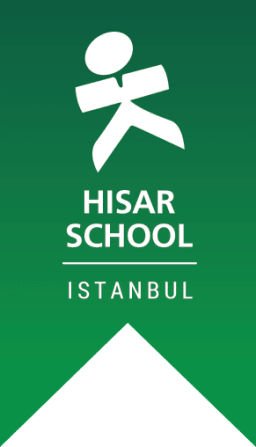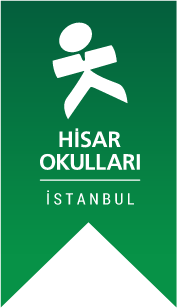Information Strategies Center
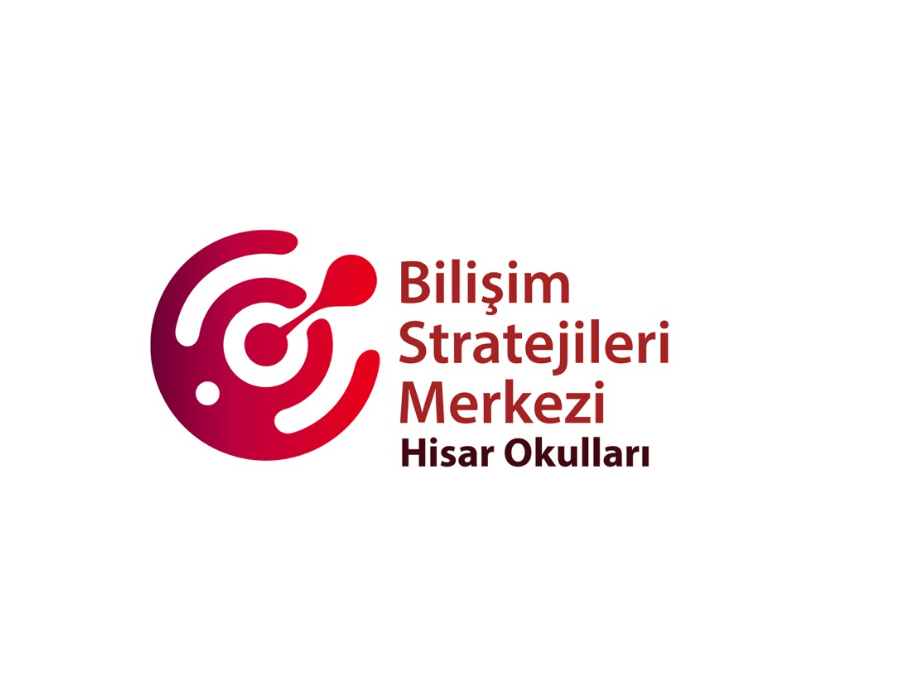

Hisar School Information Strategies Center conducts its activities with the aim of structuring a sustainable, manageable, and dynamic digital infrastructure and ecosystem with the ability to quickly adapt to changing conditions and needs within the integrity of K12, fostering a digital culture and achieving the digital transformation.
Within the framework of its mission and principles, Hisar School prioritizes approaches that enable flexibility, adaptability to change and challenging conditions, and communication-driven structures, without compromising scientific methodologies. These priorities necessitate the integration and strategic planning of face-to-face, online, synchronous, and asynchronous learning tools and strategies to enhance all academic processes and provide high-level learning experiences.
The Hisar School Information Strategies Center (BSM) is dedicated to ensuring that information and communication technologies naturally support learning environments as part of the educational process. Its work focuses on developing a dynamic, sustainable, and manageable ecosystem across the K-12 continuum, capable of quickly adapting to changing conditions and evolving needs.
You can access the Information Strategies Center (BSM) Working Guidelines [here].
You can visit the Information Strategies Center (BSM) website [here].
Our Team
| Members | |
| Dilara Vardar | Coordinator |
| Banu Aldemir | Member |
| Başak Başman | Member |
| Gökçe B. Yılmaz Aslan | Member |
| Jose Luis Perez Cabello | Member |
| Merve Vural | Member |
| Mustafa Bozkurt | Member |
| Onur Akbudak | Member |
| Sedat Yalçın | Member |
| Sezin Fins | Member |
| Tuna Aktaş | Member |
| Tuğçe Özer | Member |
Information Strategies Policy
Artificial Intelligence Education Policy
Artificial Intelligence Advisory Board
Sustainability and Standards
BSM operates with an approach that takes into account international educational technology policies and standards, in line with the standards set by the International Society for Technology in Education (ISTE).
| ISTE Standards for Educators | ISTE Standards for Students |
| Learner | Empowered Learner |
| Leader | Digital Citizen |
| Digital Citizen | Knowledge Constructor |
| Collaborator | Innovative Designer |
| Designer | Computational Thinker |
| Facilitator | Creative Communicator |
| Analyst | Global Collaborator |
| ISTE EDUCATOR STANDARDS | |
|
|
Learners Educators use technology to facilitate student learning and continuously develop themselves in this regard. |
| Leader Educators explore and utilize leadership opportunities to ensure students’ active and successful participation, and to improve teaching and learning. |
|
|
Digital Citizen Educators encourage students to contribute positively to the digital world and promote digital ethics and responsibility. |
|
| Learning Catalyst | Collaborative Educators work collaboratively with both their colleagues and students to explore, share resources and ideas, and develop solutions to problems together. |
| Designer Educators design learning activities and environments that are original, flexible, and learner-centered, taking into account students’ differences. |
|
|
Facilitator Educators support learning environments with technology to help students achieve the student standards set by the ISTE standards. |
|
| Analyst Educators consider, understand, and use data from students to ensure they achieve their learning goals. |
* ISTE Standards for Educators | ISTE.” https://www.iste.org/standards/for-educators. Accessed 16 Jun. 2020.
** Standards for Educators | ISTE.” https://www.iste.org/standards/iste-standards-for-students. Accessed 16 Jun. 2021.

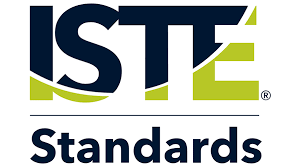

![]()
1:1 iPad & BYOD
Since 2011 in middle and high school, and since 2021 in elementary school, the 1:1 iPad & BYOD (Bring Your Own Device) programs have directly supported the educational process. Our goal is to ensure the effective implementation of our academic program across all platforms by using the right technologies.
When planning our school’s information technology strategies, we consider the readiness levels of our students and feedback from parents. Based on this, the devices recommended for student use are MacBook / iPad.
Since the 2011 – 2012 academic year:
- In middle school, students bring their own iPads to school and use them in educational settings.
- In high school, the BYOD Program allows each student to bring their own computer to school and use it in educational environments.
Starting from the 2021 – 2022 academic year, in addition to the 1:1 iPad and BYOD Programs conducted in middle and high school:
- Preschool students use the iPads available in their classrooms during educational activities.
- In grades 1, 2, and 3 of elementary school, students use the school’s mobile iPad lab in educational environments.
- In grade 4 of elementary school, students bring their own iPads to school and use them in educational settings.
Massive Open Online Courses (MOOCs)
Massive Open Online Courses (MOOCs) typically consist of pre-recorded video lectures, readings, assessments, and discussion forums. These courses are characterized by:
- Massive – Enrollment is unlimited, allowing courses to reach large audiences.
- Open – Anyone can register; there is no admission process.
- Online – Courses are delivered via the internet.
- Course – Structured content with defined objectives, duration, and learning outcomes.
At Hisar School, online learning models are incorporated into the academic process to encourage flexible and expanded learning opportunities where students take ownership of their learning.
MOOC platforms are utilized within the school community to achieve the following objectives:
✔ Foster lifelong learning skills
✔ Encourage students to take responsibility for their own learning
✔ Provide flexible learning opportunities independent of time and place
✔ Offer alternative learning pathways
✔ Support adaptation to an increasingly digital world
✔ Enhance cultural, international, and interdisciplinary perspectives
✔ Prepare students for university and future careers
✔ Contribute to the professional development of teachers and staff
Since 2022, Hisar School has been collaborating with Coursera in alignment with this approach. Further details on this initiative can be found in the Hisar High School & Coursera Presentation, which we recommend reviewing.
Information Technology Infrastructure
Our school’s IT infrastructure is designed to support both in-school and extracurricular learning activities, ensuring quick access to the right tools and resources, and enabling learning to continue independently of time and location.
Hisar School provides a 1 GB symmetric internet connection, 2 backup symmetric lines of 300 MB each, and a Cisco network infrastructure, allowing users to utilize learning and content management tools such as Google Workspace, MS Teams, Cisco WebEx, and accessible cloud and video conferencing systems, all powered by Apple, Google, Microsoft, and Cisco products. Digital tools and platforms that support both in-person and online/synchronous and asynchronous activities, tailored to the needs of grade levels and subjects, are integrated into our technical infrastructure and educational system.
Technical Infrastructure
| Technical Infrastructure | |
| Accessible Cloud Systems | Google Workspace services are used for students’ and teachers’ file and email access. Each student and teacher has unlimited email and storage space. Students and teachers use the Google Workspace platform to easily communicate, access resources, and submit assignments and projects. |
| Learning Management System | Learning Management Systems (LMS) provide teachers with an online platform to create content, deliver it to students, track student engagement, and assess student performance. Hisar Schools uses Google Workspace: Google Classroom as the content management system for preschool, elementary, middle school, and high school levels, ensuring that lesson materials and content are regularly shared with students. |
| MacBook Computers | At Hisar School, all teachers use MacBook computers, which are replaced every 5 years with new ones. |
| Video Conferencing Methods | The video conferencing method is a powerful and effective tool for staying connected with students and continuing the academic process in any situation. Hisar School uses Google Workspace: Google Meet for online classes during the remote learning process at the K12 level. |
| Smart Board Systems | All classrooms are equipped with Promethean Titanium ActiveBoard 75″ or 86″ Interactive Whiteboard systems and camera + audio systems that allow broadcasting from the classrooms. |
Communication Channels
Our digital communication channels are shared in the table below.
| Channels | Targets | Definitions |
|---|---|---|
|
(name.surname @hisarschool.k12.tr) |
Academic Staff Student Parents |
It is used as the primary communication tool, and the school email account should be checked regularly. |
| Google Workspace |
Academic Staff Student |
GMail, Google Classroom, Google Calendar, Google Meet, Docs, Slides, Sheets, Forms, and Jamboard applications are frequently used by teachers and students. |
| Content Management System (CMS) |
Academic Staff Student |
Course materials and content are regularly shared through Google Classroom. |
| Video Conferencing System |
Academic Staff Student |
Online classes, meetings, and conferences are conducted through Google Meet. |
| HisarNet Teacher Portal | Academic Staff | Hisar School Teacher Information System https://hisarnet.hisarschool.k12.tr/LogIn.aspx |
| HisarNet Student Portal | Student | Hisar School Student Information System https://smart.hisarschool.k12.tr/LogIn.aspx |
| HisarNet Parents Portal | Parents | Hisar School Parent Information System http://parents.hisarschool.k12.tr/ |
| Support Web Site | General Access | Up-to-date information, educational videos, and documents are shared regarding the integration of technology into educational environments. https://destek.hisarschool.k12.tr/ |
| Hisar School Web-site | General Access | www.hisarschool.k12.tr |
Software Policy
Ensuring the effective execution of academic processes requires a reliable and sustainable digital ecosystem aligned with international standards. In this context, it is essential that the software to be integrated into the technical infrastructure meets the following criteria:
- Compliance with ISTE / Common Sense Standards
- Compliance with KVKK (Personal Data Protection Law) processes
- Compatibility with the school’s technical infrastructure and systems
- Digital Sustainability
- Determination of the software’s usage objectives
- Licensing policies applied by the software for educational institutions
- Ensuring the continuity of the software at the K12 level
- Collaboration of software serving similar purposes
At the end of each academic year, BSM conducts a Technology Roadmap study for the following academic year, taking into account the criteria mentioned above and supporting HyFlex Course Design Strategies. Applications published by international organizations such as ISTE and Common Sense are prioritized for evaluation, and distribution is made according to the following categories:
- Operational
- Instructional
- Content
- Productivity
- Assessment
Roles and Responsibilities
Roles and Responsibilities of the Academic Staff
It is essential for the Hisar School academic staff to adhere to the Technology Standards for Academic Staff, which outline competencies, standards, and guidelines for technology use.
The roles and responsibilities of Hisar School’s academic staff regarding technology integration are detailed in the following document:
📄 Academic Staff Roles and Responsibilities
Roles and Responsibilities of Students
The International Society for Technology in Education (ISTE) defines the various roles of students in technology-enhanced learning as follows:
- Empowered Learner – Students actively engage in their learning by using technology to set, pursue, and demonstrate progress toward their goals.
- Digital Citizen – Students understand the rights, responsibilities, and opportunities of living, learning, and working in an interconnected digital world. They behave in a safe, legal, and ethical manner and serve as role models for responsible digital conduct.
- Knowledge Constructor – Students critically research various sources using digital tools, create meaningful knowledge, and develop innovative learning experiences for themselves and others.
- Innovative Designer – Students use a variety of technologies to identify and solve problems, creating new, useful, or imaginative solutions.
- Computational Thinker – Students develop and employ strategies to understand and solve problems, utilizing the power of technology-based methods to develop and test solutions.
- Creative Communicator – Students select appropriate platforms, tools, and formats to communicate clearly and express themselves creatively through digital media.
- Global Collaborator – Students work collaboratively with others, participate productively in local and global teams, and use digital tools to broaden perspectives and enhance learning.
Under these standards, students are expected to take responsibility for their own learning and act in accordance with the roles and responsibilities outlined.
📄 Student Roles and Responsibilities
Roles and Responsibilities of Parents
As key stakeholders in the educational process, parents’ collaboration, support, and feedback play a crucial role in student success. We would like to reaffirm the importance of parental engagement in learning.
📄 Parent Roles and Responsibilities
Roles and Responsibilities of the Administrative Staff
It is essential for the Hisar School administrative staff to adhere to the Technology Standards for Administrative Staff, which outline competencies, standards, and guidelines for technology use.
The roles and responsibilities of the Hisar School administrative staff regarding technology integration are detailed in the following document:
📄 Administrative Staff Roles and Responsibilities
“Open Source” Approach
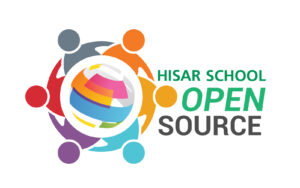
With the establishment of the Information Strategies Center (BSM) at Hisar School, all digital transformation initiatives within the school are conducted in an integrated structure, aligned with international standards.
The reports, documents, policies, and roadmaps developed through these efforts are made publicly accessible not only to the school community but also to all educational institutions, teachers, students, and parents.
These resources can be accessed via the BSM Website.
BSM Newsletters
BSM Newsletters are published monthly to support one another during the digital transformation process and to ensure communication and collaboration within the school community. Addressing a wide range of topics related to digital transformation, the newsletters feature diverse perspectives and suggestions, drawing from national and international reports and research. In addition to contributions from our teachers and staff, the newsletters include experiences of educators from other schools and insights from leading academics in their fields.
Our newsletters are initially shared with our entire academic staff, parents, alumni, board of directors, and board of trustees. Subsequently, they are made available to all educators through an open-source approach, published on support.hisarschool.k12.tr and the school’s website.
June 2023 / March 2023 / February 2023 / January 2023 / December 2022 / November 2022 / May 2022 / April 2022 / March 2022 / February 2022 / January 2022 / December 2021 / November 2021

Hybrid & Distance Education
Affecting all aspects of life, the Covid-19 outbreak has also started a major transformation in schools, mobilizing educational institutions from almost all corners of the world towards a new education design in line with the 21st-century paradigms. Read more…

Artificial Intelligence and Education
As educators, by placing ethical principles at the core of studies on the role of artificial intelligence (AI) in education, we can pave the way for developing effective solutions and recommendations within the context of AI in education. Read more…

Digital Citizenship, Ethics, and Awareness
At Hisar School, our efforts in the field of digital citizenship have been regularly accredited by Common Sense Education, the leading organization in this area globally, since 2016. Read more…
